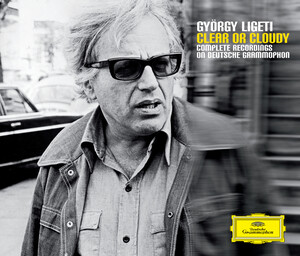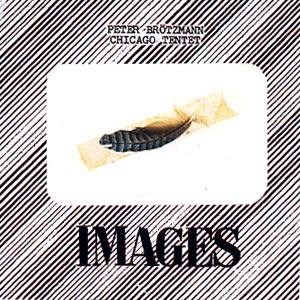 "I Need You to Hold on While the Sky is Falling" [2008]
"I Need You to Hold on While the Sky is Falling" [2008]Download

"Love Songs of the Hanging Garden" [2005]
Download
Visit Kelley Polar's website
 "I Need You to Hold on While the Sky is Falling" [2008]
"I Need You to Hold on While the Sky is Falling" [2008]


 This 1999 album marked Japanese DJ savant Nobukazu Takemura's debut into highly experimental, difficult to classify music, which had previously been primarily club oriented or at least closer to the traditional side of IDM. "On A Balloon" kicks things off ambitiously with more than 20 minutes of utterly alien, amorphous sounds, whose original sources we can only guess at. His process for generating these sonic wonders involves sending some of the outputs of his mixing board back into the inputs, creating a feedback loop with many exotic possibilities. The palette of sounds constantly changes, but many melodic and textural themes do recur - Takemura's use of building up and breaking down patterns keeps the careful listener in constant attention and surprise. His use of stereo panning is also very impressive here; headphones are recommended to appreciate all the detail present.
This 1999 album marked Japanese DJ savant Nobukazu Takemura's debut into highly experimental, difficult to classify music, which had previously been primarily club oriented or at least closer to the traditional side of IDM. "On A Balloon" kicks things off ambitiously with more than 20 minutes of utterly alien, amorphous sounds, whose original sources we can only guess at. His process for generating these sonic wonders involves sending some of the outputs of his mixing board back into the inputs, creating a feedback loop with many exotic possibilities. The palette of sounds constantly changes, but many melodic and textural themes do recur - Takemura's use of building up and breaking down patterns keeps the careful listener in constant attention and surprise. His use of stereo panning is also very impressive here; headphones are recommended to appreciate all the detail present.
 In tribute to the great Hungarian iconoclast who passed away in 2006, Deutsche Grammophon released this affordable collection of his works spanning the 1960s to 1990s. The selections are varied, covering the many facets of Ligeti's personality and invention in a wide range of formats.
In tribute to the great Hungarian iconoclast who passed away in 2006, Deutsche Grammophon released this affordable collection of his works spanning the 1960s to 1990s. The selections are varied, covering the many facets of Ligeti's personality and invention in a wide range of formats.

 I can hardly describe this album better than was done by AmbiEntrance back on July 25, 1999:
I can hardly describe this album better than was done by AmbiEntrance back on July 25, 1999:
...and those 500 copies have long been sold. Today the album is only available for download.optimal.lp draws heavily from the microscopic and ostensibly souless world of digital electrons, giving them loose structure, warmth and life by way of stunningly arranged sound patterns. In this most impressive debut, shuttle358 (a.k.a. Dan Abrams) has constructed a definitive ambient/electronic blend. For further insights, see this month's interview with Taylor Deupree of 12k.
Operating as shuttle358, Dan Abrams proves that the "cold" mechanics of computerized sound can be given distinct warmth and beauty. optimal.lp absolutely radiates with a dazzling blend of precision and passion, evoking a hearty 9.4. Seriously, you'd best be getting over to the 12k website and getting your copy of this masterpiece; it's limited to 500 copies...
Generating its own bio-mechanical atmosphere, a hazy, rhythmic echosystem opens swarm, to be joined by thinly hovering rays, muted notes and occasional insectoid electronic accompaniment. Sweeping over bug-like sound patterns and a bed of static, slowly in... casually drones in a straight line, with further accents from smooth bell-tones. Airy synthflow adorned by a faint shuffle, and slightly disruptive microbursts is next (1:49). Echoing with self-replicating patterns and just a bit of grit, gone goes peacefully amidst a radiant electron mist, overlain with synth strata. A thin, computerized techno-tribal beat penetrates the free-floating dronecloud of optimal, which simply basks in its lovely radiation field. A distorted voice twice questions the listener of floops which proceeds to sing a story of abstract electronics which pulse, drone, warble and waft oh-so-beautifully.
Beginning as an evolving sonic protoplasm, emergent eventually spawns small beats which rise from its densely simmering miasma. A cyclic techno-mechanical backdrop is draped with lushly swelling synth sheets in system (8:35), which receives additional visitations from electrically warbling fly-bys, muffled notes and precise, tinny syncopation. From a random gel, tank grows into something a bit more active, as its dully chiming notes begin to cascade and multiply in a gorgeously geometric soundsculpture; eventually the form suffers entropy, fading away and falling apart, though achingly lovely all the while.


 Full of fire, restless energy, ominous darkness, and delightfully spooky pizzicato, this avant-garde release on John Zorn's Radical Jewish series mixes "Jewish traditions with classical, gypsy and downtown improvisation" (Tzadik). Sounds fairly esoteric, but the atmosphere of the record is usually anything but - this is fun, accessible music packed with real emotions and astonishing group coherence through a lot of highly complex pieces. For the inclined the word "math" might come to mind while listening to this, but the constantly changing, bouncing rhythms really feel closer to ethnic traditions from Eastern Europe than the contemporary math rock scene, and never feel like the point of the compositions. Led by Malkovksy's button accordian and held together by the Israel Contemporary String Quartet (plus an extra contrabassist), this is 50 minutes of delight.
Full of fire, restless energy, ominous darkness, and delightfully spooky pizzicato, this avant-garde release on John Zorn's Radical Jewish series mixes "Jewish traditions with classical, gypsy and downtown improvisation" (Tzadik). Sounds fairly esoteric, but the atmosphere of the record is usually anything but - this is fun, accessible music packed with real emotions and astonishing group coherence through a lot of highly complex pieces. For the inclined the word "math" might come to mind while listening to this, but the constantly changing, bouncing rhythms really feel closer to ethnic traditions from Eastern Europe than the contemporary math rock scene, and never feel like the point of the compositions. Led by Malkovksy's button accordian and held together by the Israel Contemporary String Quartet (plus an extra contrabassist), this is 50 minutes of delight.

 Pretaluz or "black light" is a fitting title for an album with such stark contrasts. Angolan songwriter and musician Waldemar Bastos sings of much joy and pain over nine beautiful songs, which contain elements of Afropop and tropicalia, frequently making strong use of guitar and rhythm. However, Bastos' voice is the highlight of the album - it ranges from warm and friendly to horrifically despairing, and gives all of the music a sense of emotional sincerity that distinguishes it from more typical worldbeat albums. Angolan pride is infused throughout the work, motivating a combination of African tradition with modern pop elements derived from many regions of the world. Finally it is worth noting while it's still August that "Rainha Ginga" makes for one of the greatest sun-tinged summer songs this author has yet heard.
Pretaluz or "black light" is a fitting title for an album with such stark contrasts. Angolan songwriter and musician Waldemar Bastos sings of much joy and pain over nine beautiful songs, which contain elements of Afropop and tropicalia, frequently making strong use of guitar and rhythm. However, Bastos' voice is the highlight of the album - it ranges from warm and friendly to horrifically despairing, and gives all of the music a sense of emotional sincerity that distinguishes it from more typical worldbeat albums. Angolan pride is infused throughout the work, motivating a combination of African tradition with modern pop elements derived from many regions of the world. Finally it is worth noting while it's still August that "Rainha Ginga" makes for one of the greatest sun-tinged summer songs this author has yet heard. This is a wonderful album. Alternating between pieces by Igor Stravinsky and Johannes Sebastian Bach, Leonidas Kavakos and Peter Nagy dance and gasp through moments of baroque rationality, aggressive modernism, and achingly beautiful serenity. The combination of Stravinsky and Bach works quite well and the playing is masterful. The highlight here is the first piece, (and the least accessible), Stravinsky's relatively unheard of "Duo Concertante", but all the selections are gorgeous. Leonidas Kavakos' violin is the star of the show here - he plays with an expressive fervor, and his gasps for air add some humanity and struggle to his otherwise seemingly effortless playing.
This is a wonderful album. Alternating between pieces by Igor Stravinsky and Johannes Sebastian Bach, Leonidas Kavakos and Peter Nagy dance and gasp through moments of baroque rationality, aggressive modernism, and achingly beautiful serenity. The combination of Stravinsky and Bach works quite well and the playing is masterful. The highlight here is the first piece, (and the least accessible), Stravinsky's relatively unheard of "Duo Concertante", but all the selections are gorgeous. Leonidas Kavakos' violin is the star of the show here - he plays with an expressive fervor, and his gasps for air add some humanity and struggle to his otherwise seemingly effortless playing.
